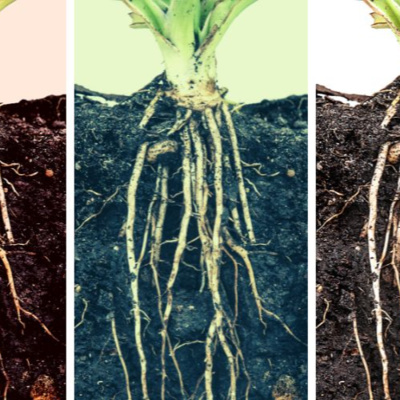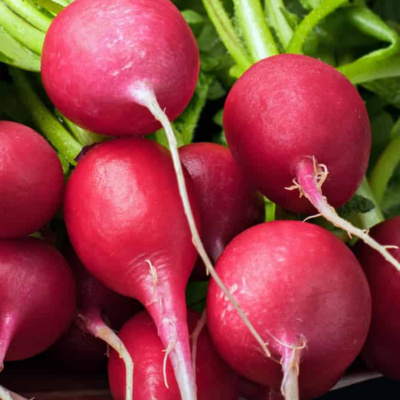
Botany One
By Botany One weblog
The audio versions may be slightly altered as some things in print don't make sense in audio, like references to figures.




Symphony of Insights: Transforming Crop Simulation with Sound and Music
Revolutionizing scientific communication and insight through auditory and visual representations
You can read this post online at https://botany.one/2024/04/symphony-of-insights-transforming-crop-simulation-with-sound-and-music
You can read the original research at https://doi.org/10.1093/insilicoplants/diad023

Harnessing the Power of Synthetic Data for Deep Learning Image Analysis
The Synavis framework provides a solution to overcome data scarcity for training deep learning biological image analysis models.
You can read this post online at https://botany.one/2024/04/harnessing-the-power-of-synthetic-data-for-deep-learning-image-analysis
You can read the original research at https://doi.org/10.1093/insilicoplants/diad022

A Comparative Analysis for Predicting Wheat Yield in Rainfed Areas of Morocco
A new study comparing crop yield prediction models reveals insights into the effectiveness of different modeling in the face of climate change.
You can read this post online at https://botany.one/2024/04/a-comparative-analysis-for-predicting-wheat-yield-in-rainfed-areas-of-morocco
You can read the original research at https://doi.org/10.1093/insilicoplants/diad020

Exploring the synergy of canopy architecture and nitrogen partitioning
Models uncover how plants coordinate architectural characteristics and photosynthetic nitrogen allocation to optimize photosynthesis.
You can read this post online at https://botany.one/2024/01/exploring-the-synergy-of-canopy-architecture-and-nitrogen-partitioning
You can read the original research at https://doi.org/10.1093/insilicoplants/diad014

Towards Super-High Yielding Rice: A Novel Approach to Optimize Grain Filling
A novel systems model, in conjunction with genetic algorithms, identify ideotypes with high yield potential.
You can read this post online at https://botany.one/2023/12/towards-super-high-yielding-rice-a-novel-approach-to-optimize-grain-filling
You can read the original research at https://doi.org/10.1093/insilicoplants/diad011

Climate-Proof Wheat: Insights on Key Traits for Yield Stability in a Dynamic Environment
Assessing the impact of traits on wheat yield and stability under climate change.
You can read this post online at https://botany.one/2023/12/climate-proof-wheat-insights-on-key-traits-for-yield-stability-in-a-dynamic-environment
You can read the original research at https://doi.org/10.1093/insilicoplants/diad013







SIMPLACE: The Next Generation Platform for Agricultural Systems Analysis
SIMPLACE offers a flexible and transparent approach to developing customized crop models
You can read this post online at https://botany.one/2023/06/simplace-the-next-generation-platform-for-agricultural-systems-analysis
You can read the original research at https://doi.org/10.1093/insilicoplants/diad006


South African Succulents Predict Weather to Maximise Pollination Success
Bulbine frutescens keeps track of temperatures so it’s ready for passing pollinators.
You can read the blog post at https://botany.one/2023/04/south-african-succulents-predict-weather-to-maximise-pollination-success/
You can read the original research at https://besjournals.onlinelibrary.wiley.com/doi/full/10.1111/1365-2435.14282

How Do Grapevine Leaves Adapt to Light? New Research Sheds Light on Plant Anatomy
Researchers have developed a new theoretical framework to understand how grapevine leaves adjust their structure and function under varying light conditions, revealing that thicker, less porous leaves with specific cell shapes are key to maximizing photosynthesis in high light environments.
You can read the story at https://botany.one/2023/04/how-do-grapevine-leaves-adapt-to-light-new-research-sheds-light-on-plant-anatomy/
You can read the original research at https://academic.oup.com/aobpla/article/15/2/plad001/7005251

Citizen Science Boosts Models of Rare Plant Distribution
“Didn’t expect that, did ya?!” Mason Heberling
You can read the story at https://botany.one/2023/03/citizen-science-boosts-models-of-rare-plant-distribution/
You can read the original research at https://esajournals.onlinelibrary.wiley.com/doi/10.1002/ecs2.4419

Improving Urban Green Spaces Can Increase Inequality
A new study suggests that increasing urban green spaces and street trees may unintentionally worsen inequality, as they can lead to neighbourhoods being infested by hipsters and property developers.
Story: https://botany.one/2023/03/improving-urban-green-spaces-can-increase-inequality/
Research: https://www.tandfonline.com/doi/full/10.1080/13549839.2023.2184784

Researchers uncover how an enzyme helps a sundew digest its victim’s DNA
Researchers have uncovered the unique structure and function of the S1-type nuclease enzyme DAN1 in the Lance-leaved sundew, Drosera adelae, which aids the carnivorous plant in breaking down prey for nutrient absorption.
You can read the article at https://botany.one/2023/03/researchers-uncover-how-an-enzyme-helps-a-sundew-digest-its-victims-dna/
You can read the original research at https://academic.oup.com/aob/article/131/2/335/6956342

Environmental DNA Technique Sheds New Light on Pollinator Monitoring
A study reveals how environmental DNA can help monitor and conserve our vital pollinators.
You can read the story at https://botany.one/2023/03/environmental-dna-technique-sheds-new-light-on-pollinator-monitoring/
You can read the original research at https://onlinelibrary.wiley.com/doi/full/10.1002/edn3.399

Study Develops Herbicide-Resistant Super Basmati Rice Using CRISPR-Cas9
The new strain of rice could help farmers save labour and water resources while combating weed infestations.
You can read the story at: https://botany.one/2023/03/study-develops-herbicide-resistant-super-basmati-rice-using-crispr-cas9/
You can read the original research at https://academic.oup.com/aobpla/article/15/2/plac059/6986705

Thinning Chinese Pine Plantations Could Be a Solution for Improved Plant Diversity and Forest Regeneration
The best way to rejuvenate forests is to let in a little light – but not too much.
You can read the story at https://botany.one/2023/03/thinning-chinese-pine-plantations-could-be-a-solution-for-improved-plant-diversity-and-forest-regeneration/
You can read the original research at https://www.sciencedirect.com/science/article/pii/S2197562023000209

Orchid Mimics Aphids to Lure Pollinators in Intricate Trap Flower Scheme
What appears to be a place of safety becomes a maze, as an orchid manipulates its visitor.
You can read the story at https://botany.one/2023/03/orchid-mimics-aphids-to-lure-pollinators-in-intricate-trap-flower-scheme/
You can read the original research at https://academic.oup.com/aob/article/131/2/275/6883959

Ceropegia gerrardii smells of pain to attract ‘blood’ drinking flies
New research uncovers how this South African plant tricks kleptoparasitic flies into pollination by imitating wounded honey bees.
You can read the blog post at https://botany.one/2023/03/emceropegia-gerrardii-em-smells-of-pain-to-attract-blood-drinking-flies/
You can read the original research at https://nph.onlinelibrary.wiley.com/doi/abs/10.1111/nph.18888


Unique Evolutionary Histories in Marginal Habitats of the Atlantic Forest Uncovered
Marginal habitats, previously thought to be subsets of the rain forest, have distinct evolutionary paths, challenging our understanding of the Atlantic Forest’s diversity.
You can read the story at https://botany.one/2023/03/unique-evolutionary-histories-in-marginal-habitats-of-the-atlantic-forest-uncovered/
You can read the original research at https://academic.oup.com/aob/article/131/2/261/6682811


MIT Researchers Develop Silk-Based “Unclonable” Tags to Combat Counterfeit Seeds
New system harnesses randomness and provides a unique code that cannot be duplicated, bringing hope to farmers plagued by fake seeds.
You can read the story at https://botany.one/2023/03/mit-researchers-develop-silk-based-unclonable-tags-to-combat-counterfeit-seeds/
You can read the original research at https://www.science.org/doi/10.1126/sciadv.adf1978


A Bounty of Wasted Pollen and Nectar Poses New Questions for Pollinator Conservation
A study finds that almost 60% of nectar produced by ivy in autumn goes uncollected by pollinators.
You can read the blog post at https://botany.one/2023/03/a-bounty-of-wasted-pollen-and-nectar-poses-new-questions-for-pollinator-conservation/
You can read the original research at https://resjournals.onlinelibrary.wiley.com/doi/full/10.1111/een.13231

Botanical genomics to boost sustainable agriculture: the case of faba bean
Since the release of the first plant genome in 2000, the field of next-generation sequencing applied to botanical species has bloomed and expanded from model organism (Arabidopsis thaliana) to crops, thus becoming a powerful tool to guide progress towards a more sustainable agriculture.
Read the blog post at https://botany.one/2023/03/botanical-genomics-to-boost-sustainable-agriculture-the-case-of-faba-bean/

Feral Crops: The Untapped Potential to Boost Food Security Amid Climate Change
Scientists are exploring a new way to improve food security in the face of climate change by studying "feral crops" - wild plants that have escaped cultivation and continue to thrive without human intervention.
You can read the blog post at https://botany.one/2023/03/feral-crops-the-untapped-potential-to-boost-food-security-amid-climate-change/
You can read the original article at https://nph.onlinelibrary.wiley.com/doi/full/10.1002/ppp3.10367

Clonal Plants Use Smart Connections to Boost Resistance Against Hungry Insects
Plants that can reproduce by cloning themselves can share resources and signals to resist herbivores. Clones can change the structure of their leaves according to herbivore stress through the connections between them.
You can read the blog post at https://botany.one/2023/03/clonal-plants-use-smart-connections-to-boost-resistance-against-hungry-insects/
You can read the original research at https://academic.oup.com/aobpla/article/15/2/plac062/6894554

Seeds of Hope Sit Unused in Storage
Limited funding and resources are preventing seed banks from fully using their seed collections to conserve endangered plants.
Read the blog post at https://botany.one/2023/03/seeds-of-hope-sit-unused-in-storage/
Read the research at https://www.sciencedirect.com/science/article/abs/pii/S0006320723000915

How Native Plants Team Up to Repel Invaders
Native plants that suffer when black mustard invades their patch do much better when a neighbour helps.
You can read the blog post at https://botany.one/2023/03/how-native-plants-team-up-to-repel-invaders/
You can read the original research at https://link.springer.com/article/10.1007/s11258-023-01304-6

Nanoplastics threaten plants’ ability to clean up industrial waste
Water Hyacinths can help clean up polluted water when grown in artificial wetlands, but nanoplastic pollution could dramatically reduce their efficiency.
Read the blog post at https://botany.one/2023/03/nanoplastics-threaten-plants-ability-to-clean-up-industrial-waste/
Read the original research at https://www.sciencedirect.com/science/article/pii/S0304389423004223

From flowering-related genes to your plate: the science behind optimizing radish yield
Scientists have discovered that the reason why some radish plants take longer to flower than others is that different copies of certain genes that control flowering time, can interact in complicated ways with each other, leading to differences in plant blooms.
You can read the blog post at https://botany.one/2023/03/from-flowering-related-genes-to-your-plate-the-science-behind-optimizing-radish-yield/
You can read the original research at https://academic.oup.com/aobpla/article/15/2/plac066/7024584

A celebration of Women who revolutionized the History of Botany: 9 incredible stories for International Women's Day
To celebrate International Women’s Day, Botany One highlights nine historical figures who made great contributions to Botany – from the first pioneering plant illustrators and species collectors to recent Nobel prize winners. With their talent and hard work, these brilliant women participated in adventurous botanical expeditions, launched courageous initiatives for biodiversity conservation and paved the way to tremendous scientific advances (not only in Botany).
You can read the blog post at https://botany.one/2023/03/a-celebration-of-women-who-revolutionized-the-history-of-botany-9-incredible-stories-for-international-womens-day/

Ecologists spark hope of protecting western American forests from the worst of wildfires
Ecologists with a burning desire to protect forests have grim news for the western United States.
Read the blog post: https://botany.one/2023/03/ecologists-spark-hope-of-protecting-western-american-forests-from-the-worst-of-wildfires/
Read the original research: https://doi.org/10.1073/pnas.2208120120


Set a killer to catch a killer?
Carrying dengue fever and Zika virus, the Asian tiger mosquito is a danger to humans. Italian scientists have examined whether plants could help reduce their numbers.
You can read the blog post at https://botany.one/2023/02/set-a-killer-to-catch-a-killer/
You can read the original research at https://www.sciencedirect.com/science/article/pii/S104996442300035X


Purple Moor Grass prevents Oaks from getting help finding nutrients
Molinia caerulea out-wrestles Quercus petraea in the battle for better ectomycorrhizal colonization.
You can read the blog post at https://botany.one/2023/02/purple-moor-grass-prevents-oaks-from-getting-help-finding-nutrients/
You can read the original research at https://academic.oup.com/aobpla/article/15/2/plac043/6730718


Flowers play a key role in flight control for bumblebees
A bee can approach a flower from any direction, but markings on the flower help guide bees in the most effective way, like a natural air traffic control.
Read the post at https://botany.one/2023/01/flowers-play-a-key-role-in-flight-control-for-bumblebees/
Read the original research at https://doi.org/10.1111/1365-2435.14262


How does the corpse flower’s scent change over time?
The Titan arum produces a smell like rotting flesh. Now botanists have analysed the chemicals and found that the smell changes over the two days that the plant flowers.
Read the blog post at https://botany.one/2023/01/how-does-the-corpse-flowers-scent-change-over-time/
Read the original research at https://www.nature.com/articles/s41598-022-27108-8
